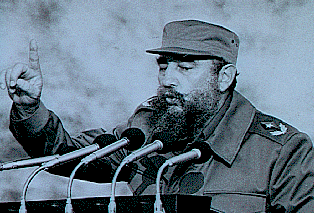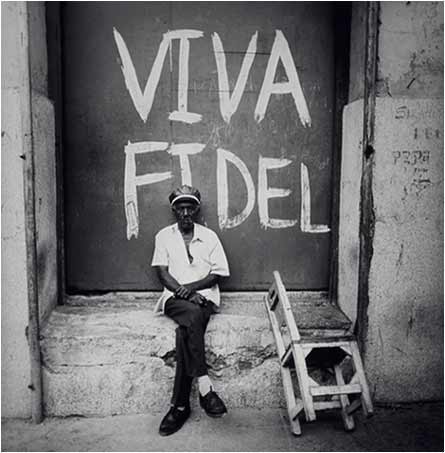| |
The Cuban
Revolution
(1952-1958) |
|


Fulgencio Batista, strongman of the "sergeants' revolt'' of 1933, had
ruled Cuba de facto for the greater part of the previous 20 years. He
was running behind in the presidential elections when he staged a
military coup on March 10, 1952. As president, he operated as the
steward of sugar barons, banks, gambling syndicates and the great
corporate interests of North America.
He answered any opposition with assassination, breaking strikes with
machine-gun fire, and using repression against the Cuban people to
maintain the massive exploitation of sugar workers, farmers and women.
Under Batista's rule, the people were becoming poorer while Cuba was
being turned into a playground for the US rich.
While the traditional politicians cowered before the coup, Fidel
Castro gathered a group of young men and women around him who were
willing to participate in actions to restore democracy to Cuba. Their
first act was to launch an armed attack on the second largest military
garrison in the country, the Moncada barracks base of the Maceo Regiment
in Santiago, eastern headquarters of the military dictatorship. Their
immediate objective was the armoury and its store of weapons and
ammunition. If they were successful, their plan was to head for the
mountains to continue the fight.
The Cuban Revolution of 1959 began with the failed attack on the
Moncada Barracks, and ended in triumph with the ousting of dictator
Fulgencio Batista. After a tremendous failure at Moncada, nearly all of
the rebels were killed or captured. At his trial, Fidel Castro gave his
famous speech, History Will Absolve Me, and was pardoned after only two
years. When released, he was forced into exile for his safety.
In Mexico, he trained an army which he prepared for a guerilla war
against Batista. On December 2, 1956, Castro and 82 others aboard the
Granma landed in Cuba. Their numbers were quickly reduced by Batista's
soldiers, but most of the important leaders made their way into the
Sierra Maestra mountains. The rebel forces began to rely on the peasants
for support. Batista took to ruthlessly attacking pro-Castro towns,
which only stirred up more support for the rebel leader. A movement in
the cities began as well. Frank País, whom Castro had left in charge
while in exile, began to attack the Batista government in various ways.
Anti-Batista students, though not associated with the Castro-led group
of rebels, unsuccessfully led an armed assault on the Presidential
Palace. On May 24, 1958, Batista launch Operación Verano.

The Pico Turquino, highest elevation of the Sierra Maestra.
Granma Expedition
After receiving U.S. congressional recognition, he became the ‘Granma’
helmsman
Cuando el Granma surcó por la Historia
Esta batalla la ganamos con las verdades
Juan Manuel Márquez: El segundo jefe del Granma
‘Let’s go on, there’s solid ground ahead’
The other Calixto García
Walking towards sunrise
Presidential Palace Attack,
March 13, 1957
Cuba Suppresses Youths’ Uprising; Forty Are Killed (N.Y. Times,
March 14, 1957)
Havana Police Find Rebels’ Arms Cache (N.Y. Times, March 16,
1957)
Aquellos jóvenes del 13 de Marzo
Second Front Escambray
The DR's Decision to Fight Guerrilla War
Eloy Gutierrez
Menoyo
William Morgan
1959
Cuban Revolutionary Government Cabinet of President Manuel Urrutia Lleó,
January 1959
Angry Young Cubans take over
Batista and Regime Flee Cuba; Castro Moving to Take Power; Mobs Riot and
Loot in Havana
Castro's men pour into Havana
Fidel Castro: The Observer Profile
El juicio de Huber Matos
|

